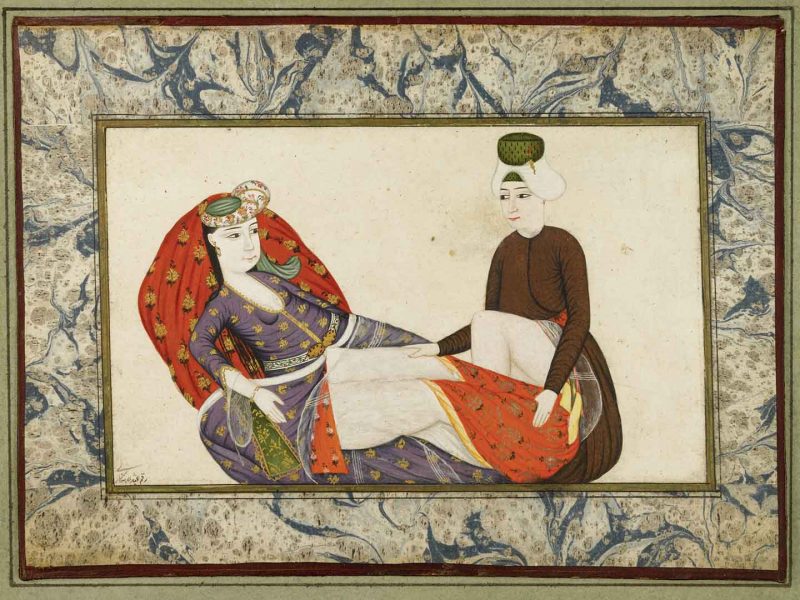Allowing the Anatolian people to express the elegance, imagination, intelligence, and perspective of the world with its own unique structure, the traditional Turkish handicrafts shed light on the past with its heritage and products. Many handcrafts are transformed into a work of art as a result of our approach to everything with a fine point of view, while emerging from the essential necessities of life and geography. We are examining some of the works of art that are the work of great patience and vision, and along with activities that allow you to breathe and get rid of the stress and the chaos of the city.
Calligraphy (Hat)
Each religion shapes its own culture with its own teachings. There are many art forms that Islam has shaped. The most popular of these is the art of calligraphy, which is still being held in the workshops, the academies, the art stores. Calligraphy is a writing art that emerged as a Quranic center. It is based on the beautiful writing of the Quran and its reproduction in this way. But it has enlarged over time, and it has benefited from this art especially in the writing of the popular lines and poetry of the Ottoman period. It has different varieties such as Kûfi, muhakkak, nesih, Rika’, tevki, talik. The calligraphy found its most beautiful form in the talik writings of Mehmet Izzet Efendi, where it was performed with the Arabic letters because of its circular structure. Even the brilliant designs of the tughras of Ottoman Sultans came out with different forms of this art.

Beautiful hat (calligraphy) as the most famous of traditional Turkish handicrafts
Paper Marbling (Ebru)
The expression for dancing of colors probably finds its most beautiful shape in the marbling art. It is not known exactly when it emerged, but the history of the paper marbling art dates back to the 9th century. It is estimated together with the materials and methods used that it emerged especially around India and Iran. But as it is in many visual arts, the most beautiful examples were given in the Anatolian geography during Ottoman times. In a specially manufactured building called a boat, a composition by adding a mixture of dyes and dyes in the tragacanth water is obtained. Then a special piece of paper is routed over the water in the boat, and the paint on the boat is transported to the paper. The most beautiful side of the art is the reflection of different images and color tones on the paper that even surprises the artist of the paper marbling art. The essential part of paper marbling art is bile, a substance in the bivalve of bovine animals, and it is used as a means of joining the water and producing magnificent patterns.
There are different varieties such as Oversize Marbling, Tide Marbling, Shawl Marbling, Crested Marbling and Flowered Marbling.
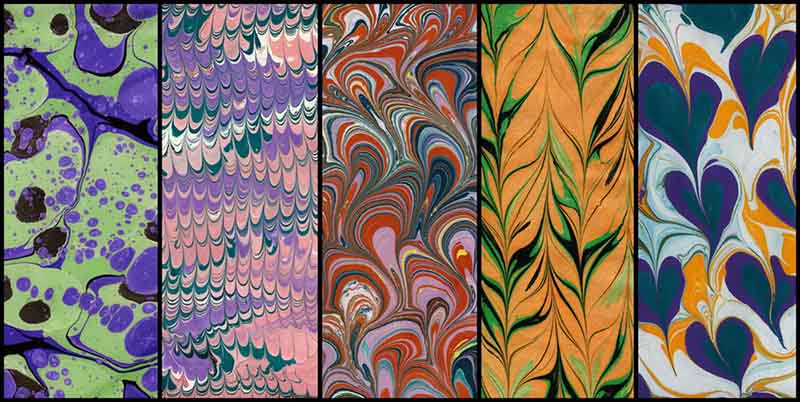
The expression for dancing of colors probably finds its most beautiful shape in the marbling art.
Wood-Carving (Ahşap Oymacılığı)
Woodcarving is a traditional craft whose primary raw material is wood. The process begins with selecting a suitable type of wood; commonly walnut, oak, linden, or beech. Motifs, inscriptions, or geometric patterns are then drawn onto the surface. Using specialized carving and cutting tools unique to the craft, these designs are worked into the wood, extending below the surface, so that the decoration becomes an integral part of the material rather than merely a surface embellishment. Common motifs in woodcarving include floral ornaments, geometric arrangements, calligraphic inscriptions inspired by Islamic art, and occasionally figurative elements. Throughout history, woodcarving has been practiced in many civilizations, but it reached exceptional refinement in the Turkish-Islamic tradition during the Seljuk period. In 13th-century Anatolia, master Seljuk artisans produced remarkable works such as mosque doors, pulpits (minber), Qur’an stands (rahle), sarcophagi, and palace furnishings. Advanced techniques such as kündekâri, deep relief carving, embossing, and inlay work were employed. The natural warmth and aesthetic appeal of wood, combined with its durability, made this art form suitable for both architectural ornamentation and everyday objects. Today, woodcarving continues to flourish, preserved through traditional motifs while also embracing modern design sensibilities, maintaining its place as a vital part of cultural heritage. Safranbolu stands as the best preserved UNESCO site for the best examples of wood-carving in local antique houses.
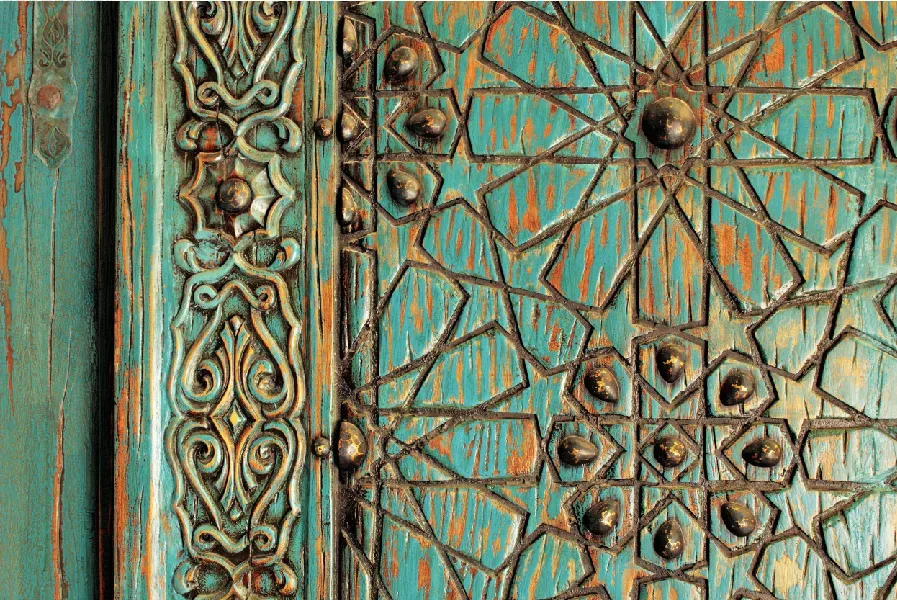
Visit Safranbolu for the best examples of wood-carving.
Felt-Making (Keçecilik)
Felt is a durable, non-woven textile produced by compressing and interlocking the fibers of sheep’s wool and goat hair using water, soap, and pressure. Known for thousands of years, this technique has held great significance in nomadic cultures for both its practical and artistic qualities. The Turks, having developed felt-making on the Central Asian steppes, used it not only for shelter and everyday needs but also as a medium for aesthetic expression. Felt was widely employed in tent coverings, floor mats, saddlebags, hats, socks, slippers, and other clothing items. The art of felt-making was enriched with colorful wool patterns featuring geometric designs, floral motifs, animal figures, and symbolic shapes. These decorations reflected both the aesthetic sensibilities and belief systems of the communities that produced them. Carried from Central Asia to Anatolia, this handicraft continued to be made for centuries in rural regions of Anatolia using traditional methods. Its ability to retain warmth, combined with its light weight and durability, made felt not just a utilitarian material but also a valued element of cultural identity. Today, felt-making remains a living craft, sustained through traditional techniques while also adapted to modern design, finding new forms in bags, accessories, decorative objects, and works of art.
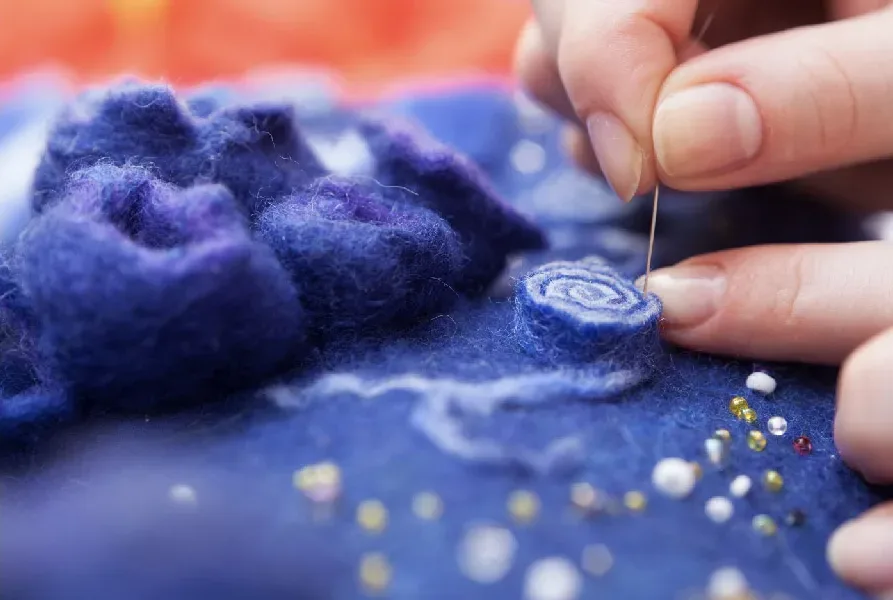
Illumination (Gilding – Tezhip)
One of the branches of the art that develops around the writing, illumination uses a very precious metal such as gold as a gilding material. Fine gold leaves are used in the art of illumination, which is the projection of Ancestry in the foreground of writing and drawing. In fact, in the art of illumination, which is related to the art of calligraphy, the surroundings of the calligraphy are adorned with some applications in which the main material is gold plates. Gold is mixed with different colors and glues to obtain a very thin and soft texture.
Later on, a special tool in the form of a pencil-shaped hard stone, called “mühre“, is millimetrically processed on the periphery of the line. Especially in the Quran, the art of illumination to protect the wordings has been developed in parallel with the art of calligraphy.
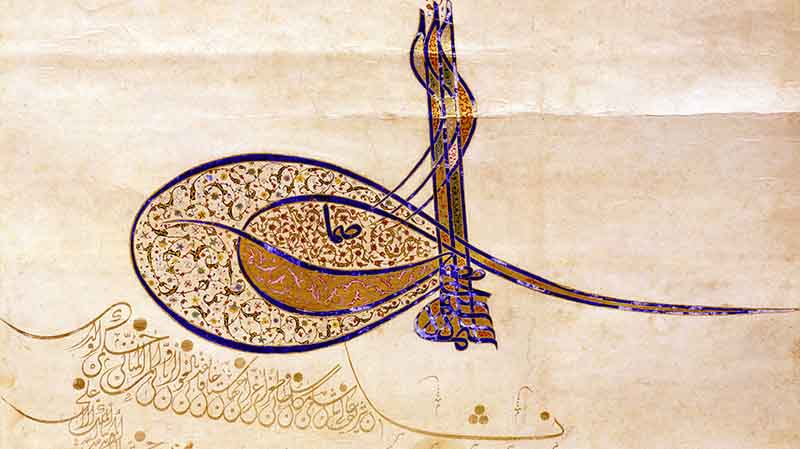
One of the branches of the art that develops around the writing, illumination uses a very precious metal such as gold as a gilding material.
Pottery (Çömlekçilik)
The oldest examples of pottery produced in Anatolia date back to around 7000 BCE. This ancient craft centers on shaping clay and firing it in a kiln to create durable vessels and various everyday tools. Pottery is one of the oldest human crafts, serving both practical needs and aesthetic purposes. Ancient Anatolian societies used pottery for storing food, carrying water, and keeping seeds and crops, gradually adding decorative patterns and designs to their creations. The pottery-making process involves preparing and kneading the clay, shaping it by hand or on a potter’s wheel, and then firing it at high temperatures. Surfaces were often decorated using natural pigments, carving techniques, or relief patterns. Civilizations such as the Hittites, Phrygians, Lydians, and Romans in Anatolia developed a wide variety of styles and motifs, reflecting the cultural diversity of the region. Today, pottery continues to be produced using traditional techniques combined with modern design approaches especially in Cappadocia, resulting in both functional items and decorative or artistic objects. In this way, pottery remains a vital and living part of Anatolia’s cultural heritage.
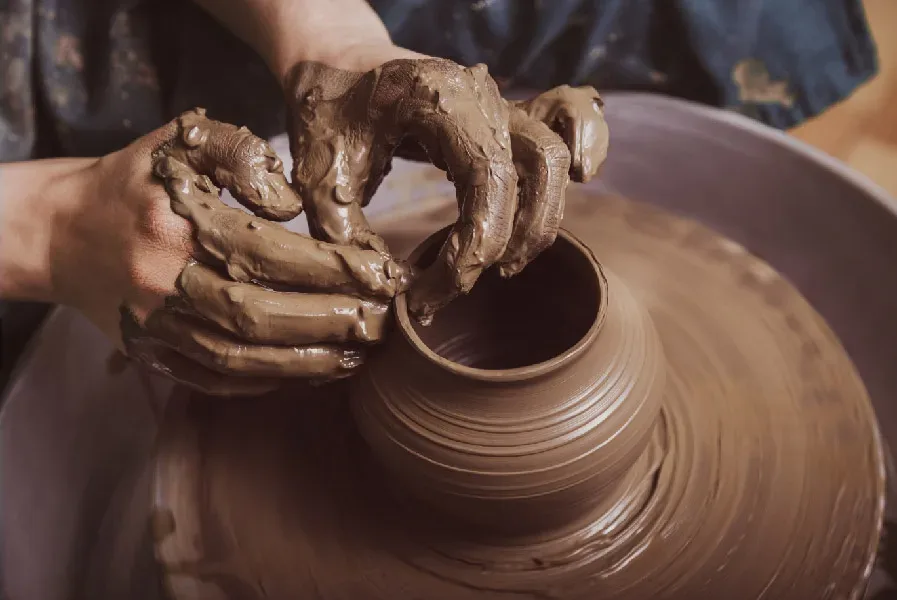
Cappadocia is worth visiting for pottery works.
Tile-Making (Çinicilik)
The art of decorating an object made from fired clay with floral motifs, geometric patterns, or inscriptions, coating it with colored glazes, and then firing it again is called çinicilik (traditional Turkish tile-making). This craft, whose origins date back to the Turkic culture of Central Asia and the Seljuk period, reached its peak during the Ottoman Empire, particularly in renowned centers such as İznik, Kütahya, and Çanakkale. The designs used in çinicilik typically feature stylized floral motifs such as tulips, carnations, roses, and cypress trees, alongside rumi, hatayi, and geometric ornamentation. In the production process, the design is first prepared on paper and then transferred onto the clay form. The surface is painted with colored glazes or oxide-based paints, and then fired in high-temperature kilns to make it durable. Requiring a refined sense of aesthetics, meticulous craftsmanship, and strong drawing skills, çinicilik has been used for centuries in architectural decoration; on the walls of mosques, mausoleums, and palaces; as well as for tableware and decorative objects. Today, tiles continue to be produced both using traditional techniques and with modern design approaches, remaining one of the most elegant expressions of Turkish-Islamic art and an important part of cultural heritage.
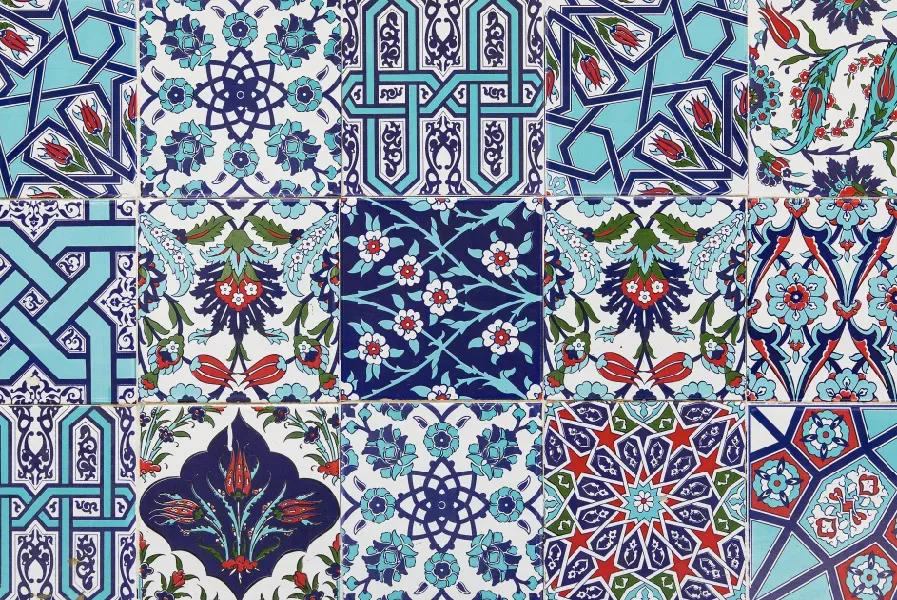
Kütahya is the center for Turkish tile-making with its well-known local brands that export their products.
Miniature Art
The miniature art, which goes back to the 2nd century papyrus, is one of the common art techniques of both the east and the west. The name “minium“, which is the preferred name for writing the first letters of the manuscripts used in Europe in the Middle Age as capital and red, is taken from the lead oxides. Lead oxides give a red color to the writing. Already in the Ottoman and Seljuk ‘s miniatures, red is the main color. Based on the drawing of real life objects in smaller dimensions as an art technique, miniature is a different art of embroidery and portraiture, which can be done with materials such as paper and ceramics. In Turks, miniature first appeared in Central Asia during the 8th and 9th centuries, then continued to develop during the Seljuk and especially Ottoman times.
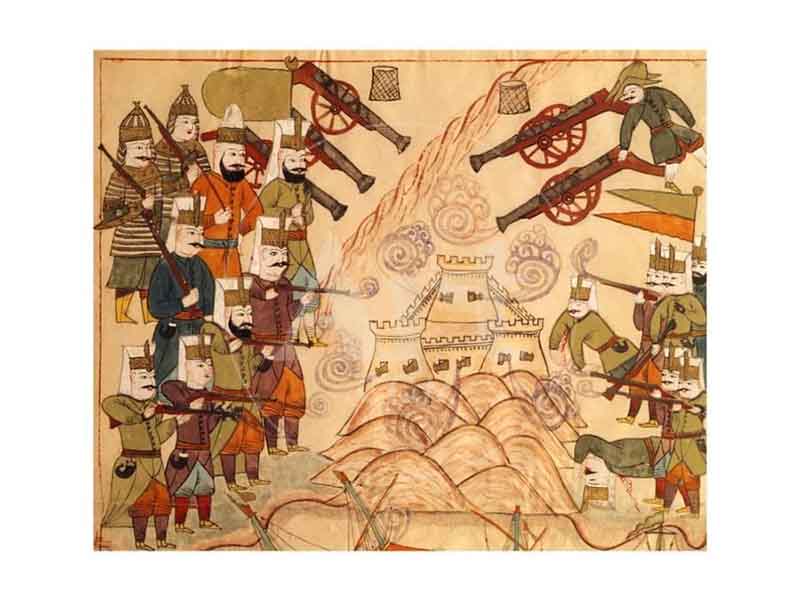
The miniature art, which goes back to the 2nd century papyrus, is one of the traditional Turkish handicrafts
In the decoration of the books, especially in making portrayals in the works of handwriting, miniature is highly used. Miniature, which has its own rules, is different from painting art. While attempting to reflect the objects individually in the picture, it is almost forbidden to draw the objects together with an Islamic theme in the miniature art. For this reason, the reality is distorted and then included in the miniature. The human hand is drawn with four fingers and the details on the nose and eye in the images are not reflected.
Thus, miniature, which is a different license for the art of painting in terms of Islamic point of view, is used even in the historical artifacts of the period, so that all the organizations made by the Sultan, ceremonies of accession to the throne in Ottoman Empire, reach the present day. The most notable miniature artist is Levni, who lived in the 17th century.

